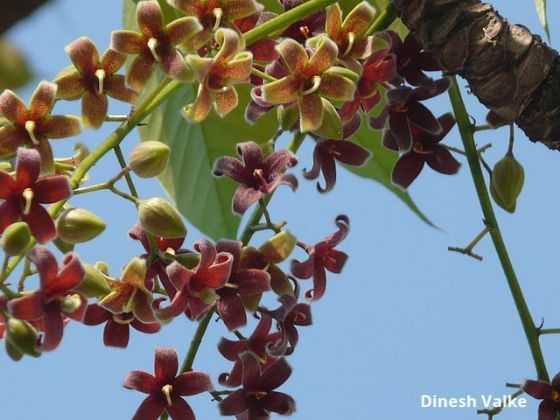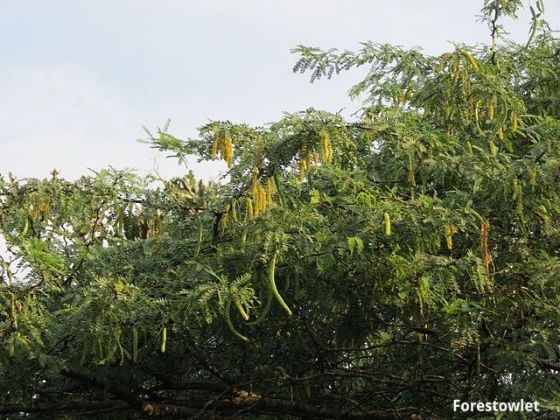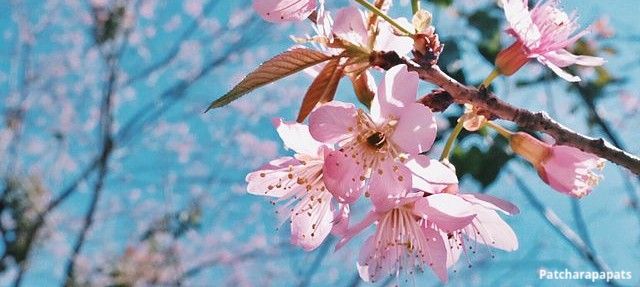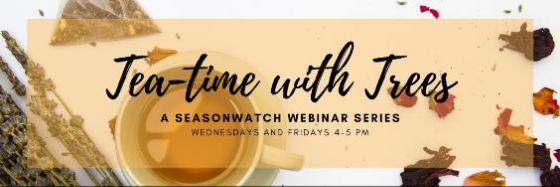Hello SeasonWatch supporter,
Greetings! We hope you and your loved ones are safe and healthy during the pandemic that our world is experiencing this year. After a series of lockdowns, we are all slowly returning to some sort of routines. In that spirit, we bring you our ‘happenings’ newsletter after long and hope that you will enjoy reading it.
In the past couple of months, most of us have spent a lot of time at our homes. This was an opportunity for many of us to reconnect to nature by watching the plants and animals that live within our homes and around us. We hope you too had opportunities to do so and we would love to hear how you spent time in nature during the lockdown. Share your stories with us on the email below.
In this newsletter, find out what some of our star teachers have been up to during the lockdown, read also about our featured tree and answer a quiz, find what’s new in the latest app update, and watch some interesting talks on plants that were part of the Tea-time with Trees webinar series in the past couple of months.
A big thanks to all our participants and happy tree-watching!
Regards,
SeasonWatch Team
Email: sw@seasonwatch.in
Featured Tree

Sterculia foetida
Wild almond (Sterculia foetida), is a tree of the lowland dry forests and open areas, and usually grows along river banks or on sandstone rocks. The tree is straight-boled, and the branches arise horizontally, in whorls, and the tree usually grows to be very tall. Fruits are star-shaped with four to five follicles, velvety, and turn scarlet when ripe. Inside are dark grey seeds that are relished as raw or roasted. Interestingly, this tree stinks, especially when it is flowering, or when any part of the tree is cut or injured. The grey-brown bark of the tree is warty and flakes off.
Tree Quiz

Do you know this tree?
This is a tree of the desert and other arid regions of the country. Highly valued in the western India a source of food and medicines, for people and livestock, and is much revered. When not loped, the crowns develops thick, droopy foliage. Small, yellow flowers are bundled together on to elongated spikes are loved by bees. Fruits are cylindrical pods 8-20 cm long.
Guess this tree and tell us your answer by writing to us on sw@seasonwatch.in.
Answer to the last Tree Quiz was Streculia foetida. Congratulations Sweedle Shivkar for answering correctly!
Tree Watching during the lockdown
We asked a few our teachers in Kerala and Meghalaya about how the lockdown affected their tree-watching. Below are their responses.

Ms Annamma T Baby, MTSSUP School, Manjadi, Thiruvalla
“This year is really shocking and the current pandemic has taught us a lesson in every manner. My season watch group faced difficulties in monitoring our regular trees.
As a result of the lockdown, I had to move to Konny, my native place which is 55 km away from Thiruvalla. Since, all my season watch trees were in Thiruvalla (some in the school campus and others on the way to the school), I felt very sad at the prospect of being so far away and at not being able to see them regularly. I felt that I lost everything.
Finally one day, I thought of taking a risk and I hired an auto-rikshaw to go to Thriuvalla. I took the effort to observe all the trees. I notices that some of the trees appeared very gloomy as their leaves had turned yellowish. I couldn’t find any nests in the trees either. Some of the trees in my school campus had heaps of soil covering the ground portion.
I spoke to some of my students and I was relieved to find that they too observed their trees from the terrace of their homes during the lockdown and tried their best to watch their trees. In the end I feel it has been a new and a wonderful experience!”
Mr Prabhakaran P V, GHSS Mathamangalam, Kannur
“Imposition of triple lockdown in my village in Kannur in the wake of COVID 19 didn’t prevent me from watching the trees or birds around my homestead. I have actively participated in the Lockdown Birding Challenge organised by Bird Count India. I could hear the songs of a lot birds which were collecting the nectar from Gulmohur and Teak trees at my homestead during the lockdown period. I have participated in the Season watch Home Photography Challenge 1& 2 and took the photos of trees and animals through my windows.
I could observe a lot of trees during my journey to the Centres for Higher Secondary Examination and Valuation which were held during the lockdown period. Selling of flowers of Indian laburnum (Cassia fistula) in the markets and shops on the eve of Vishu in April is a very big business in Kannur for the last few years. Because of the lockdown this year, flowers on these trees near the roadsides could be seen even after the Vishu. So more fruits are expected from laburnum trees this year. I have also observed the mangrove trees in my village and prepared a mangrove nursery for the free distribution of propagules and saplings to the members of SEED as part of the Mangrove Afforestation Program.”
Mr Saroop KV, Veeravanchery LP School, Kozhikode
“Due to more free time during the lockdown, I was able to observe many more trees. My village home has many trees and so I could watch trees safely during this time. I observed that due to the summer rains, most trees had fresh green leaves. Also, there was not much noise due to vehicles etc, and so I was able to enjoy nature’s silence as well as the song of birds among the trees. In my place this year, the Mango trees had few fruits but the Jackfruit trees had good fruiting.”

Mr Resly Roy, Pariong Presbytery HS School, West Khasi Hills
“Since the beginning of the lockdown period, I have been unable to go to school. Therefore, watching trees or taking regular observations has not been not possible. I don’t know when the schools will reopen. During this period, I have managed to observe only a few trees. Hoping that the school reopens and I can watch more trees.”
Ms Caroline Syiem, Anderson HS School, Nongstoin, West Khasi Hills
“We are continuing to make observations on trees that are in the school campus, since I am staying near the campus. Two other students from class 9 and 10 are observing trees in their home-gardens. These are plum, pomegranate and guava. In the school campus, we are regularly observing and uploading our observation for two Himalayan cherry blossom trees and a peach tree.”
Mr Shai Kharjana, Rev TJ Jones Presbyterian School, Mawphlang, East Khasi Hills
“The lockdown changed the way to watch trees dramatically. Staying in the city, it is difficult to watch or see many trees and to upload data on their phenology. But
the webinars happening online and on social media, helped me in learning about trees as well as their habitat.”
News and Updates
Make Offline Observations
Want to upload a casual observation but having problem connecting to the internet? Now you can make offline observations with the latest app update.
Make sure your device GPS is on, select the species you want to observe, select your state location, and create a casual observation offline. When done, you will see a notification at the bottom of your screen with the following message ‘offline observation will appear after connecting to internet. Pull down screen to refresh’. This means that your offline observation is saved and next time you are connected to internet you can refresh your screen dashboard for casual observations by pulling the screen down. Your observations will get uploaded to the database and also appear in your dashboard.
See below a simple graphic on how to make a casual observation offline.

Tea-time with Trees webinar series

In the last couple of months, we have hosted eleven talks in the Webinar series — Tea-time with Trees. Seven of these talks were in English, two in Tamil, and one in Malayalam. These talks covered a range of topics from plant identification, to books on plants, to habitats such as mangroves and Kaas plateau, to climbers and grasses, restoration, and how we can use art to learn about plants. If you missed watching these talks, you can check out a few of them below. If you want to see all the talks, visit out Youtube channel here and also subscribe for more updates and videos.
Books on Plants by P Jeganathan
Want to learn more about plants and wondering what books to read?
Making of a City Forest by Vijay Dhasmana
Vijay Dhasmana talks about how a part of the heavily mined Aravalli hill range in Delhi NCR was converted into an urban forest by the sheer will of concerned citizens.
Connecting to Plants through Art by Abhisheka Krishnagopal
You would require a pen and paper to work through this!
Plant Identification 101 by Navendu Page
Don your detective caps and follow clues to reveal the true identity of plants!
Recap
Summary
Starting this year many new participants joined us. A hearty welcome to all!
Total trees observed: 8,517
Total observations: 28,880
Top tree species observed: Mango (Mangifera indica), Jackfruit (Artocarpus heterophyllus), Tamarind (Tamarindus indica), Indian laburnum (Cassia fistula), and Maulsari (Mimusops elengi)
New Individuals
Vallari Sheel, Esha Dinesh, Rajesh Sachdev, Rudra Prasad Banerjee, Siddharth Agarwal, Ajinkya Supekar, Adithya, Surendhar Boobalan, P Rajangam, Sheeba, Gokul, Nandana G Anand, Swarup Subudhi, Venetia Sharanya, Sreyas Krishna, Shruthi SS, Rajesh R, Purabi Deshpande, Bhagwandas, Maya PV, Isha Khuraishi, Swathi, Bougainvilla, Abhimanyu Singh Baghel, Foolchand Kasde, Biji V, Pooja B Malaviya, Ashish Eradath, Ramya, Hemraj P Patil, Vinits Sangwan, Akshada Potghan, Shraddha, Chintan,Vignesh M, Sukumar S, Sriram, Arun, Digjoy Paul, George Tom, P. Ramya Bala, Meera R, Pradeep Kumar T, Rushad Irani, Raghvendra Vanjari, Aastha Shastri, Yogita Karpate, Prachi Srivastava Sahni, Mriginder Singh, Dipali Kuldip Itankar, Ananay
New Schools
ABC school, Mahua Ghara, Nalanda Public School, GUPS Bheemanad, Government Higher Secondary School, Kizhuthally East UP School, Netaji Higher Secondary School, AKMHSS Kotoor, Veeravnchery lP School, Umlps Thiruvilwamala, TSSGUPS, GUPS Illithode, Our Lady’s Convent Girl’s High School, St. Joseph’s Anglo Indian Girls’ Higher Secondary, Chintan Environmental Research and Action Group, St. Joseph’s A.I.G.H.S.S, GVHSS Chirakkara, Rajeev Gandhi Memorial HSS, Mokeri Kannur, Akmhss Kottoor, Vidyodaya School, Panchayat Union Middle School, Mavilayi UP School, GLPS Chengaloor, 16 Aariyur Pethanaicken Palayam




